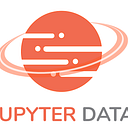Reporting & Dashboarding: When to use a Pie Chart?
The best way to express your data is through a nice visual representation. But, for your representation to be effective, it is important to choose the proper visualization form.
A pie chart is a circular graph that is broken down into segments (slices of pie). These segments represent each category’s contribution to display parts of a whole.
Pie charts are useful to show percentage or proportional data. If your need to visualize ordinal data (poor, very poor, fair…) or nominal data (country, name, age…), pie chart are relevant, especially if you have less than 6 categorical data to visualize (otherwise your pie chart will be too difficult to read at first sight).
This kind of visualization is relevant to:
Identify the size of category at first sight relatively to the whole. If you want to emphase on the proportion of one of your data, a Pie chart can help your audience to distinguish between the relative sizes of each of your data.
Compare the relative values of your data:
In this example, we can see the repartition of 6 products sold by a company. The pie chart gives me information about the percentage and the proportion and I can quickly compare one segment relatively to another, thanks to the legend.
You can dowload the Excel file and create your own Pie Chart, here is the link: http://bit.ly/2umJQDS

This Pie charts can be built with Excel Pivot table functions, but it may take a while…. Or you can save time, and build your own charts instantaneously from your data, using JetPack Data, the fastest visualization tool. The quick demo below shows how JetPack Data can be used to create a pie chart.
I hope this short article can help you with pie charts.
You can create your own charts, explore and visualize your own data with Jetpack Data.
